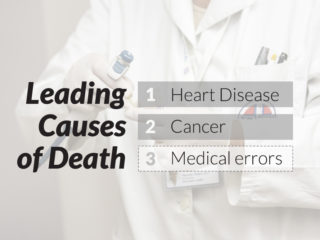Opening the door to FLA damages for mental anguish or sorrow?
Date Case Heard: July 20, 2017 | Full Decision [PDF]
This case stems from a helicopter crash that took the life of Christopher Snowball. Following the crash, Snowball’s immediate family sued for damages under the FLA. They also sued for mental distress. The Defendant then brought a motion under rule 21. It argued there is no right to sue for mental distress unless the “Plaintiffs witnessed the accident and its immediate aftermath”.
The Court noted that under s.61 of the FLA, there is a right to sue for pecuniary losses. However, there is traditionally no right to sue for mental anguish, or sorrow. The Plaintiff had not put one case before the Court where damages for mental anguish were awarded to a person who was (1) not injured; or (2) not a witness to the accident and its immediate aftermath
The Plaintiff argued the recent Supreme Court decision of Sadatti v Moorhead was a “game changer”. Sadatti did away with the need for a claimant to prove it has suffered a recognized psychiatric illness to claim damages for a mental injury so long as “the disturbance suffered by the claimant is ‘serous and prolonged and rises above the ordinary annoyances, anxieties and fears’ that come with living in civil society”. Unmeritorious claims can be attacked through a robust application of the elements needed to establish negligence.
Further, in the Sadatti, the Court went on to comment on “proximity”. The Court held that the proximity analysis should be flexible enough to capture a broad variety of circumstances. The Court wrote:
It is also implicit in Mustapha that the ordinary duty of care analysis is to be applied to claims for negligently caused mental injury. With great respect to courts that have expressed contrary views, it is in my view unnecessary and indeed futile to re-structure that analysis so as to mandate formal, separate consideration of certain dimensions of proximity, as was done in McLoughlin v. O’Brian. Certainly, “temporal”, “geographic” and “relational” considerations might well inform the proximity analysis to be performed in some cases. But the proximity analysis as formulated by this Court is, and is intended to be, sufficiently flexible to capture all relevant circumstances that might in any given case go to seeking out the “close and direct” relationship which is the hallmark of the common law duty of care.
Based on the above, the Court held that the Plaintiff’s claims for mental distress may succeed even though they did not witness the accident, and would traditionally be regarded as “secondary victims”. It was not plain and obvious that the claims had no reasonable prospect for success. The Court wrote:
Given that courts have apparently disregarded Baker by allowing claims in negligence for mental injury so long as the claimant witnesses a person’s injury, death or the aftermath of such injury or death, and given that the court in Saadati rejected the “primary/secondary victim” distinction, as well as the view that there are geographic, temporal and relational proximity restrictions that are an absolute limitation on the duty to take reasonable care to avoid causing foreseeable mental injury, it is my view that the plaintiffs’ claims for mental distress following Snowball’s death might succeed even though they are secondary victims who did not witness this sudden, traumatic event. As directed by the Supreme Court of Canada in Saadati, the outcome of the Snowball action should turn on the robust application of the elements of an action in negligence by the trier of fact rather than on the separate application of geographic, temporal, and relational considerations or a distinction between “primary” and “secondary” victims.
Counsel for the Plaintiffs: Christopher Du Vernet, C. McGoogan
Counsel for the Defendants: Timothy Trembled, L. Kittmer
Read the full decision [PDF]











